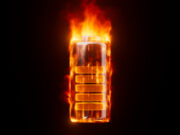
Have you ever heard of self-balancing scooters, more popularly known as hoverboards? I had not heard of them until just a few months ago. They have wheels, so they don’t really hover, which is disappointing. What the devices do, however, is catch fire from time to time. According to CNET, a popular online source for consumer technology news and reviews, the U.S. Consumer Product Safety Commission has received at least 10 reports of hoverboard fires.
Why is this relevant to AeroSafety World and Flight Safety Foundation? Because more than 50 airlines around the world have banned the transport of these devices on their aircraft. In announcing its ban on Dec. 10, Delta Air Lines said, “Poorly labeled, powerful, lithium-ion batteries powering hoverboards are the issue. Delta reviewed hoverboard product specifications and found that manufacturers do not consistently provide detail about the size or power of their lithium-ion batteries.”
Delta went on to say that its investigation showed that devices often contain batteries that have higher capacity (as measured by watt hours) than allowed on board aircraft and that “[w]hile occurrences are uncommon, these batteries can spontaneously overheat and pose a fire hazard risk.” International Civil Aviation Organization (ICAO) standards stipulate that lithium-ion batteries that exceed 160 watt hours are forbidden from being transported in either checked baggage of passengers or crewmembers or carry-on baggage.
Of course, taking a wider, longer-term view, hoverboards aren’t the issue. Products like that come and go with some regularity, particularly around the major holiday buying seasons. The bigger concern is the development of new products and technologies that may prove to be wildly popular but could pose a threat to safety. The aviation industry and all of its stakeholders need to stay vigilant and informed about emerging technologies and products, and to share information when potential risks are identified.

